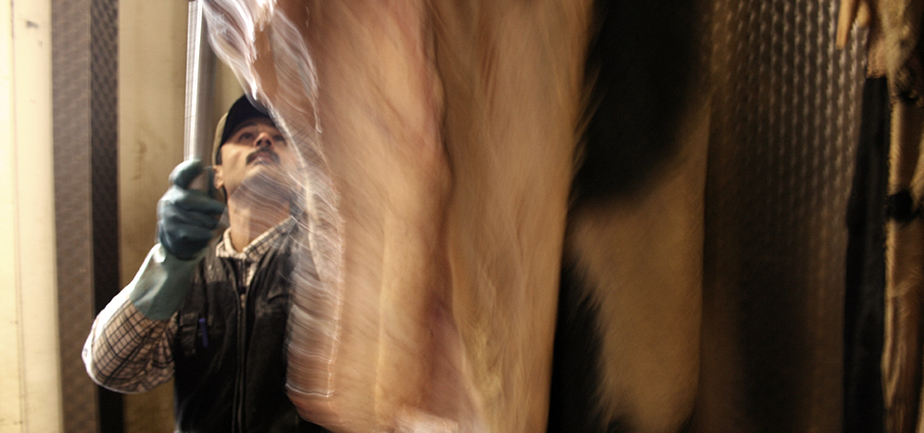The skin has served the people in its use as leather for clothing for as long as man has been around. Not least for this reason leather enjoys a high reputation as a material. Today, leather can be found in almost all areas of life; traditionally in the footwear and clothing industry, but also in furniture, as a fashion accessory or for the interior of vehicles, to name just a few. The skin of animals is always the starting point for the product leather which is a valuable byproduct of meat production.
This is where the working of the skin trade starts. Hide traders take the fresh skin from the slaughterhouse and bring it to their factory. There, the hides are firstly trimmed. During the trimming, all skin parts are separated that cannot be processed into leather.
Then, the hides are carefully checked for external flaws and classified. Depending on the animal’s origin and sex as well as weight and quality of the skin, they are divided into different categories. In this way the particular product can be matched exactly to the needs of customers (tanneries).
Hides, which are intended for the German and European market, are cooled to a core temperature of at least two degrees Celsius in refrigerated warehouses and by doing so are preserved until delivery.
If hides cannot be sold in a cooled condition or if the buyers are located in distant countries which demand transport by ship, the trimmed hides are salted and stored for at least 14 days. The preservative effect of salt occurs after two weeks. After that the conserved hides are rechecked, weighed and packed on pallets. This way the hides can be stored in special warehouses until sale or dispatch to the customer.
In addition to processing the skins, hide distributors also have a traditional trade role. As well as collecting the hides and furs in small, medium and large slaughterhouses, they put together the collected hides and furs to get “tannable” units. This is due to the fact that tanneries cannot tan large and small hides in the same barrel. Therefore, they are dependent on large, uniform hide amounts, which usually cannot be put together in the slaughterhouse itself. By paying for the hides at the slaughter, the skin distributor also takes over the financing of the storage, which enables them to extend the storage time. Furthermore, the hide trader ensures that the skin remains raw material for the leather industry. He makes sure that the hides do not spoil and slaughterhouses get informed, if the skins have been damaged during the skinning process. Spoiled or shredded skins must be disposed in special disposal plants. Without the skin trade there would be low grade flour and fat instead of beautiful, high-quality leather.

